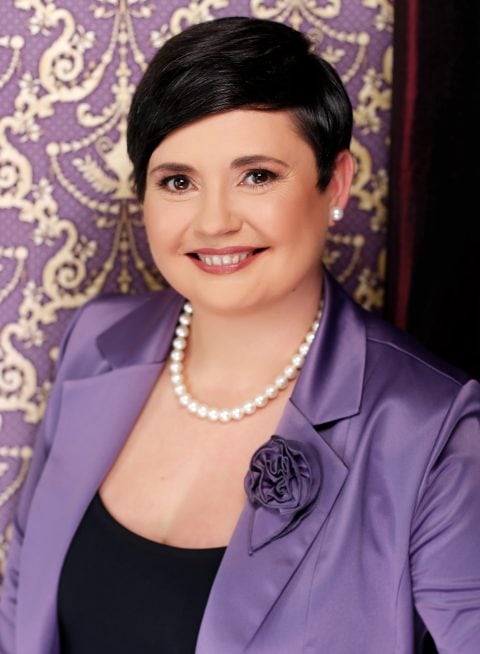The Context
She was beautiful on the stage. Her experience and convictions were shining through her every word. This is why I was so surprised to hear what she had to say when we sat down for a coffee in the hotel lobby after her panel talk.
“I’m exhausted,” Marva told me. “I have never, ever – ever – experienced so much push back as in this new CEO role I took over six months ago.”
Born in the Maghreb, Marva grew up in Spain, where she studied and got her first job as a fashion retailer. From there her career took off; with several international leadership roles under her belt, Marva thought she was ready to lead the headquarters of her company in Central Eastern Europe.
But like a perfect storm, several elements came together to make Marva’s life more difficult than it should be: she was a woman, a black person, a Muslim, and a foreigner who didn’t speak the language of any of the countries she was supposed to lead. On a diverse continent united by English this should be enough; but not in Central Eastern Europe where hanging on to national languages is still a form of securing psychological safety for many individuals and groups.
On top of that, Marva’s mandate was to drive transformation. As we well know, according to McKinsey, about 70% of transformation projects fail in general. Add Marva’s 4-edge uphill battle and you can sense the magnitude of the challenge ahead of her.
The First Step
The first thing that we needed to do was to diagnose her situation as rationally as possible. That’s why we tried to park the elephants in the room – the bias projected on her because of her gender, race, religion, and national prejudice – and we looked at the business reality.
Her challenge would have been mighty for any CEO. Essentially, she was supposed to drive the transformation of a beloved in-person retail experience into a digital powerhouse, or the company might not have a future a few years down the road.
But her brand was beloved; people spent entire days in their stores and the in-person experience was what defined her company. So, how could Marva balance the need to preserve what worked and to transform what needed to be changed? This was the real challenge ahead of her: to recognize what needed to endure and what needed to be transformed, then act decisively in both directions.
The Second Step
No CEO can drive transformation alone. This is why we knew that, if Marva was to succeed, she needed all the help she could get from her executive team.
Marva’s executive team was beautifully diverse. Gender balanced, extremely experienced, and made of several nationalities, the executive team could be a save haven for Marva if it worked well.
So, in the second step, we took our time analyzing the deeper, invisible dynamics in her executive team. We mapped the individual profiles, drives, and potential motivations of each team member, and we simulated conversations with each executive team member. We used robust systemic leadership exercises to help Marva gain more empathy with the members of her executive team and to see her team as a whole.
The Breakthrough
Once we identified the rational business and people strategy, we had to go back to the elephant in the room: prejudice.
We knew – we simply knew – that if we wanted Marva to get any fighting chance to succeed in her CEO role, we would need to reduce the volume of bias projected upon her.
So, we decided to take three days off for an executive team retreat. The topic of the retreat was empathy with storytelling. In the background we prepared a robust session on unconscious bias management for top leadership.
Our main concern was to preserve the psychological safety of each of the retreat participants. So, we gave them prompts on the stories they should prepare for the retreat. When we landed and we conducted the retreat, we started with the role of empathy in top leadership, and its impact on driving transformation together.
Then, we dove into personal stories. We basically created the room for each executive team member to share a story of a moment when they got push back because of who they were: men or women, young or old, white, Black, or Asian etc.
Through deep, personal, intimate storytelling we cut deep into the wound caused by bias and we allowed the flesh to breathe and start healing. The mood in the room changed palpably. The level of interpersonal compassion in the executive team went through the roof.
The last thing we did as part of the retreat was to nail a commitment on how to address unconscious bias in practice afterwards. Basically, we turned Marva’s executive team into her shield. When her execs started to speak more on her behalf – and on behalf of their common vision – people in the organization started to listen. And the transformation could finally begin.
The Resolution
Marva’s courage to accept a CEO role with a mission of deep transformation as a black Muslim woman in a part of the world that has yet to mature into a higher understanding of how bias can stifle human potential was remarkable. After three years in her role, Marva moved forward to lead her company’s strategic transformation from her company’s global headquarters. “This experience made me who I am today. I could never have developed the level of empathy I have today without being first forced to experience its absence. My leadership style has been completely transformed following this experience.”
Watch out when you are being invited to drive transformation. It is transformation’s wicked nature to touch everything in its way. As such, it will transform you, the people around you, and the world around you. One thing is clear: when you survive transformation, you will emerge a much, much wiser leader and human being on the other side.



